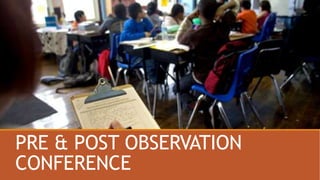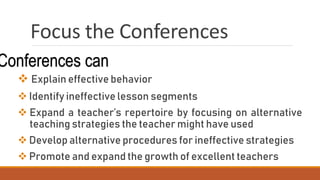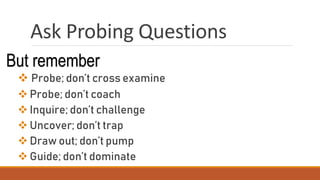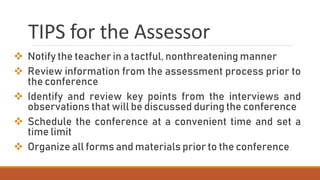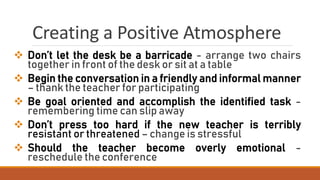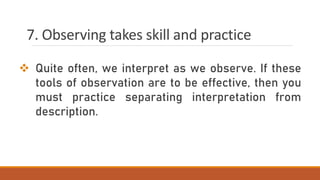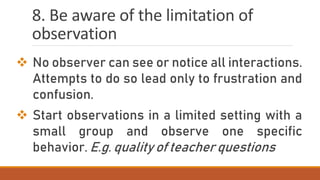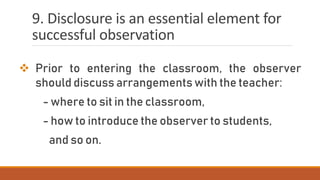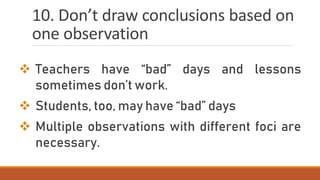The document outlines the procedures and tips for conducting pre- and post-observation conferences between teachers and assessors to enhance teaching practices. It emphasizes building trust, maintaining a supportive atmosphere, and actively listening to teachers' concerns while addressing various emotional responses during discussions. Key guidelines include effective supervision, collaborative observation tool selection, and recognizing personal bias in interpretation.
